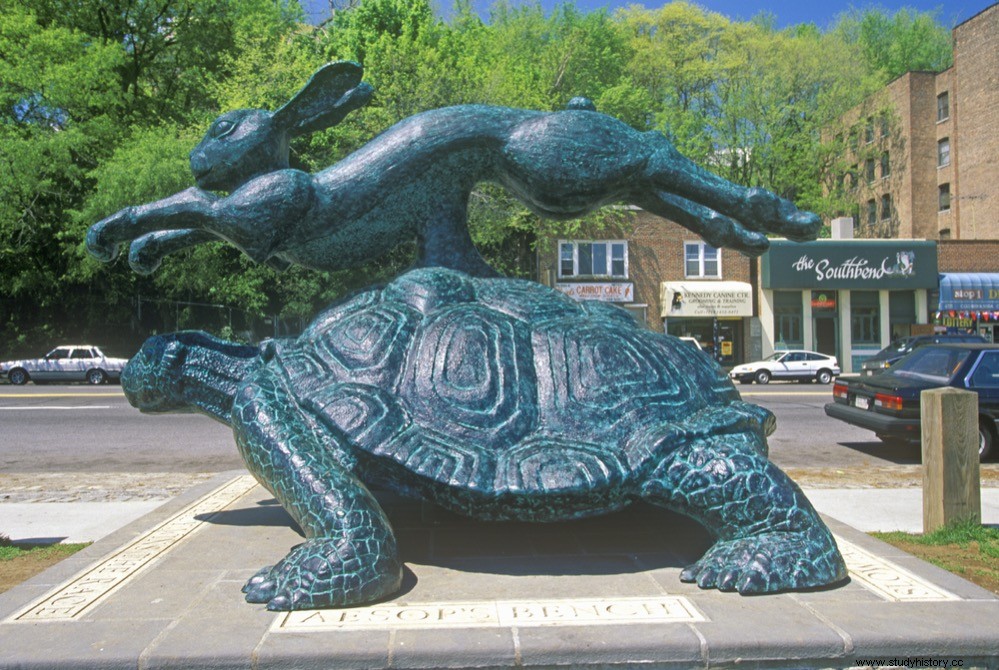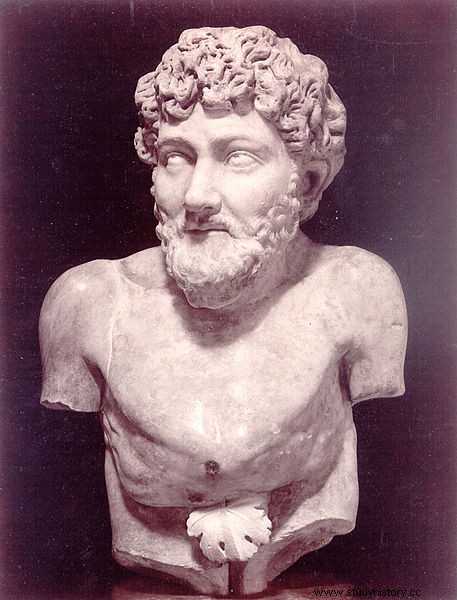We have all read, heard or seen a work of art or animation based on one of Aesop's fables. The grasshopper and the ant , The goose that lays the golden eggs , or The Hare and the Tortoise These are just some of the best known stories where animals are the protagonists attributed to the famous Greek fabulist Aesop.
The problem is that, apart from what the classical sources say (and there are plenty of references, as we shall see), there is no evidence that anyone named Aesop, inventor or collector of fables, ever existed.
None of his writings remain and the authors who mention him place his birth in Thrace, Sardes, Phrygia or Samos, without an exact origin being reconciled.

What does seem to coincide are the dates in which he could live, all of them around the year 540 BC. It is the year given by the Athenian playwright Aristophanes, who was born about a century later, and Herodotus, who argues that he must have been a slave based on the legend of the death of an Aesop in the sanctuary of Delphi:

Other sources, following Herodotus, also place him in Samos as a slave or freedman at first, to enter, already free, at the service of King Croesus of Lydia. The legend, quoted by Herodotus, says that Aesop went to Delphi with abundant riches to make offerings in the name of Croesus, but after a dispute with the Delphi, who accused him of sacrilege, he decided to send them back to the king, which caused him to hurled him from the Phaedria rocks. When they were convinced that his accusation was false, the Delphians offered financial compensation for Aesop's death to whoever had the right to claim it , and curiously only his former master showed up.
Hardly anything else is known of his life, and what little we do know is doubtful. Plato claims that Socrates knew Aesop's works by heart and used to recite them in verse. Socrates was born around 470 BC, but the fables were not collected (as far as we know) until the following century by Demetrius of Phalereus, although this collection has not survived to this day. If the estimate of Aesop's life around 540 B.C. is correct it would have been almost a century until the time of Socrates.
Aristotle also quotes him, implying that he lived on the island of Samos:

Before his death at Delphi Plutarch places him in Corinth, in a meeting with the Seven Wise Men of Greece , among whom was his friend Solon whom he had met in Sardis. None of this seems consistent with the chronology of Croesus's reign, leading many scholars since Ben Edwin Perry, who challenged these legends in 1965, to believe that they are nothing more than literary fiction. . Others indicate that a possible diplomatic mission for Croesus may have been possible. Things get complicated when we consider that Phaedrus (who translated the fables into Latin) places Aesop in Athens at the time of Pisistratus, decades after his presumed death.
A clue about the real existence, or not, of the fabulist can be given to us by the so-called Romance de Aesop . It is a biography, clearly fictitious, written in the 1st century AD. As it was an anonymous work that became part of Greek folklore, each writer who copied it remade it to his liking by adding and subtracting things. That is why there are multiple versions, all of them contradictory. But researchers believe that, before it was written down, the story had been circulating for several centuries by word of mouth, and in fact there are elements in it that can be traced back to the 4th century BC.
In which all the versions of the Romance of Aesop agree is that he was a Phrygian slave on the island of Samos, and that he was also extremely ugly :
Although the Romance is fiction, this description of Aesop took root in the popular imagination to such an extent that Planudes, a Byzantine scholar of the thirteenth century, supposed that Aesop must have been of Ethiopian origin. Numerous authors supported this assumption and continue to do so today, based on the evidence of the large number of African animals present in the fables. Driberg, for example, goes so far as to say that some claim he was Phrygian, but the more general opinion is that he was African. And if he wasn't, he should have been. . And in 1971 an American television series about fables starred Bill Cosby in the role of Aesop.
But did Aesop write his fables? That's not safe either. Herodotus calls him a writer , while Aristophanes speaks of reading Aesop and other authors cite him as the creator of fables. Most likely, it was a series of popular and moralizing stories, compiled later by various authors, to which a common origin was attributed in the indefinite figure of someone who was called Aesop as early as the 6th century BC. Mainly because they all had similar elements:animals and inanimate objects that spoke and had human characteristics. Something like if in a thousand years all the cartoons in history were attributed to Walt Disney himself.
